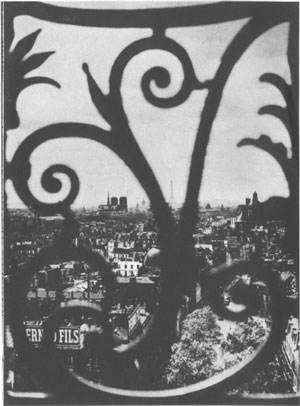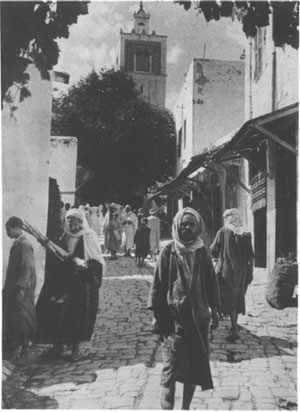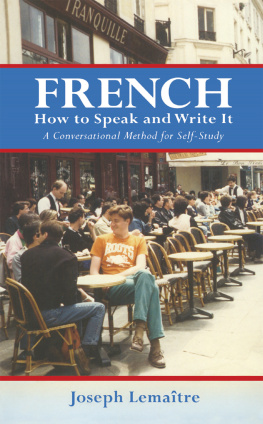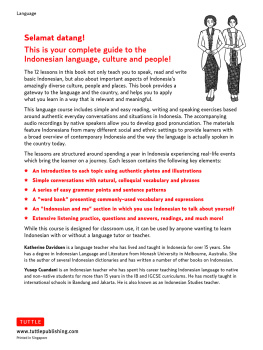
PARIS AWAITS YOU!
An enchanting glimpse of Paris which conjures up a vision of the living city, whose charming manners and customs can only be fully appreciated through knowledge of its vivacious language. Several well-known landmarks, including the Eiffel Tower and the Cathedral of Notre Dame, can be found in this panoramic view.
FRENCH
HOW TO SPEAK AND WRITE IT
An informal conversational method for self study with 400 illustrations
by Joseph Lematre
DOVER PUBLICATIONS, INC.
New York
This new Dover edition, first published in 1962, is a slightly revised version of the work first published by Odhams Press Limited. The revision consists of minor editing to adapt the book for the American audience.
This edition is published by special arrangement with Odhams Press Limited.
Library of Congress Catalog Card Number: 63-357
International Standard Book Number
ISBN-13: 978-0-486-20268-6
ISBN-10: 0-486-20268-2
Manufactured in the United States by Courier Corporation
20268225
www.doverpublications.coin

TUNISIAN STREET SCENE
French is spoken throughout a large part of the African continent, which also forms the background of many French literary works. This scene recalls the delightful travel memoirs of Eugne Fromentin, the nineteenth-century painter-writer.
HOW TO USE THE COURSE
T HE purpose of the present French Course is to lead students easily and naturally into a real working knowledge of the French language, and also to afford them an opportunity of appreciating French literature.
This course deals more thoroughly with the elementary stage and the grading of progress is less steep than is usual in language courses. It is so designed that any intelligent person can start as an absolute beginner and finish with a practical working knowledge of French. The text must be thoroughly mastered and its correct pronunciation acquired with the aid of the translation and the imitated pronunciation. A good plan would be to study together with friends. If you know someone whose native tongue is French, so much the better, for he can check your pronunciation.
Grammar is conveyed throughout by practical examples which should be memorised as far as possible. This method is preferred to the mere learning of rules by rote which tends to produce a type of student who has mastered the most abstruse niceties of grammar yet is unable correctly to ask his way to a station or order a meal in a restaurant.
FRENCH PRONUNCIATION
No doubt you have heard Frenchmen speaking their language on the radio, in the cinema or elsewhere. You will have noticed that it sounds quite different from English; you may even have called it a gabble. How are you going to learn to understand that gabble, and speak the same language yourself in a way a Frenchman will understand? It is not enough to know what a French word means and how it is spelt ; you must know how to pronounce it, too, and, with that, how to recognise it when spoken.
Neither this book nor any other can teach you the correct pronunciation of French. It can help you to acquire it, and can explain the difficulties, but it cannot speak French to you.
Luckily, there are other waysthe wireless, for example. Listening-in, even if you dont at first understand, will gradually attune your ears to French sounds and intonation.

Suppose you switch on the radio and hear the French announcer introduce a programme. You dont understand him, but he says: Programme National, etc.
You recognise the words now that you see them. Why did you fail to recognise the words as the announcer uttered them ? We use the words in English, too, but the French pronounce them differently. If you listen very carefully you may come to the conclusion that what the announcer said was not programme but brogramme. You may have this idea too when you first hear a Frenchman say pardon! where we say sorry! or une seconde where we say one moment, please ! It may sound like bardon, sgonde. To discover the reason for this, hold a lighted match in front of your mouth and say the English word programme. The match will probably go out, or certainly flicker, because so much breath is expelled before you actually make the first sound. In pronouncing the French p you must let out as little breath as possible before the sound ; try to say programme in such a way that the flame of the match is disturbed as little as possible.
National. This is pronounced with the sounds nah-syo-nahl, the first syllable as in not and the last like the al in pal. But this is still not enough to tell us what the word sounds like. Take again the corresponding English word National. It is easy to say what sound the vowel in the first syllable is, because it bears a very heavy stress, but with the other two it is more difficult, because we pronounce them quickly and rather indistinctly. In rapid speech we may even say nashnl. The French will have none of this mumbling, and every syllable in the word must be pronounced equally clearly, with an equal stress on all three.
Now we know that the announcer said: pro-grahm nah-syo-nahl.
To explain the remaining sounds of French we will take some words that are common to both French and English. The reader is almost certainly familiar with the words charlotte russe, hors duvre, restaurant, liqueur, Camembert, etc. They are all French words which are often used in English, and they all have to do with eating. In the mouths of the English people these words have either an English pronunciation or a compromise between the English and the French ; in either case the pronunciation of them would puzzle a Frenchman.
Charlotte russe: The first part of the name of this sweet is pronounced shahr-lot, just as in English, except that the r is pronounced more strongly and that we must beware of stressing the first syllable at the expense of the second. Both must have equal attention. The vowel of the second word, russe, meaning Russian, has no English equivalent. If you say ee with your lips right out, as though you were going to whistle, you will get the sound. This we represent in our imitated pronunciation by 
Hors duvre: The first part of the word is pronounced like the underlined part of the word l or d, and u is pronounced like ea in earth. This sound is rendered as  in our system of simplified pronunciation (the combination u is rather unusual) so that we can render the pronunciation of hors duvre by or-d
in our system of simplified pronunciation (the combination u is rather unusual) so that we can render the pronunciation of hors duvre by or-d vr.
vr.
Restaurant: The first part is pronounced like rest. The vowel au is the pure oh. The only difficulty will be the sound of the last syllable. In French it is a nasal sound, and to get it right you will have to practise it a little. The term nasal indicates that the sound is made through the nose. That is to say, it will bear a resemblance to the sounds a Cockney or an American makes if he has a twang. Begin by humming a long
Next page
















 in our system of simplified pronunciation (the combination u is rather unusual) so that we can render the pronunciation of hors duvre by or-d
in our system of simplified pronunciation (the combination u is rather unusual) so that we can render the pronunciation of hors duvre by or-d